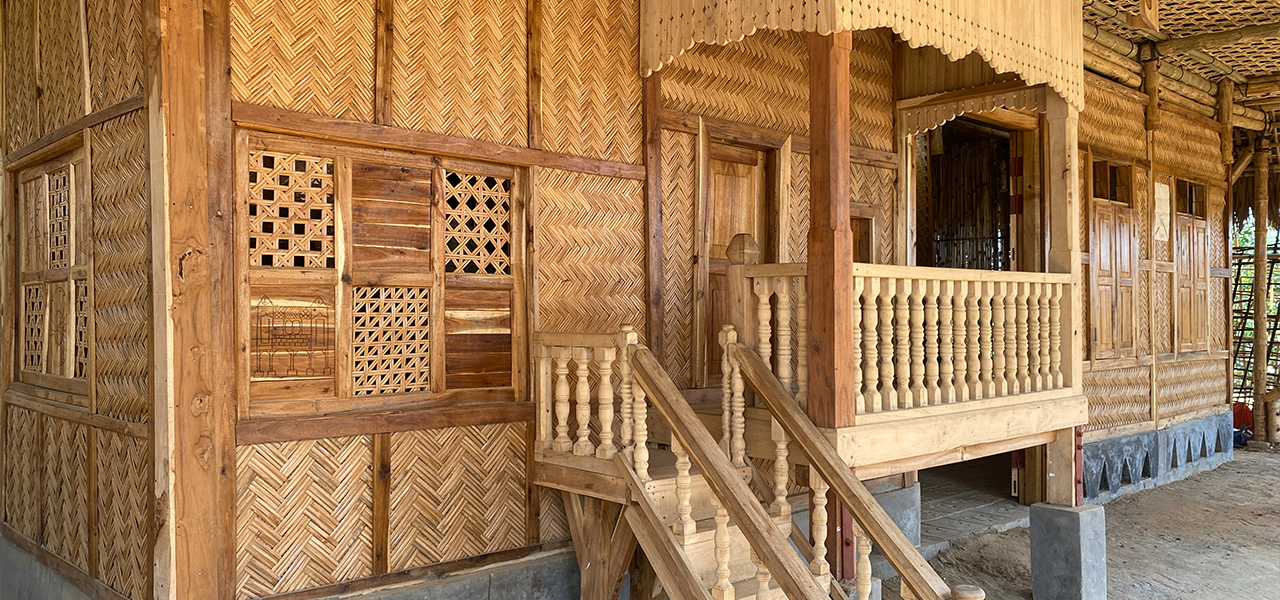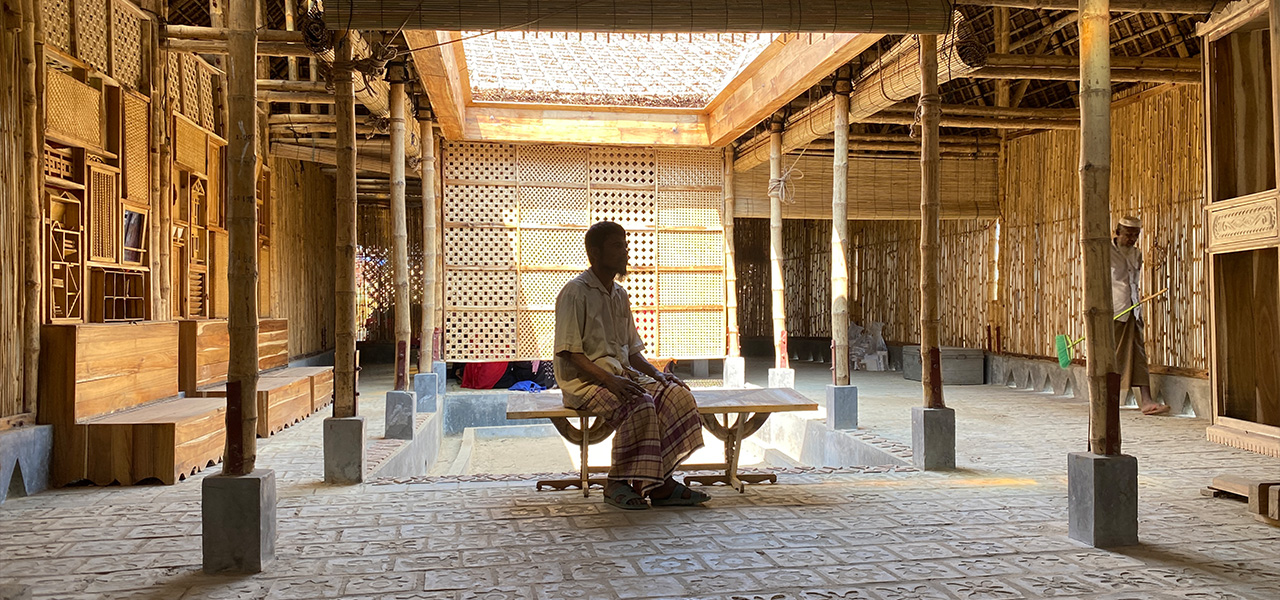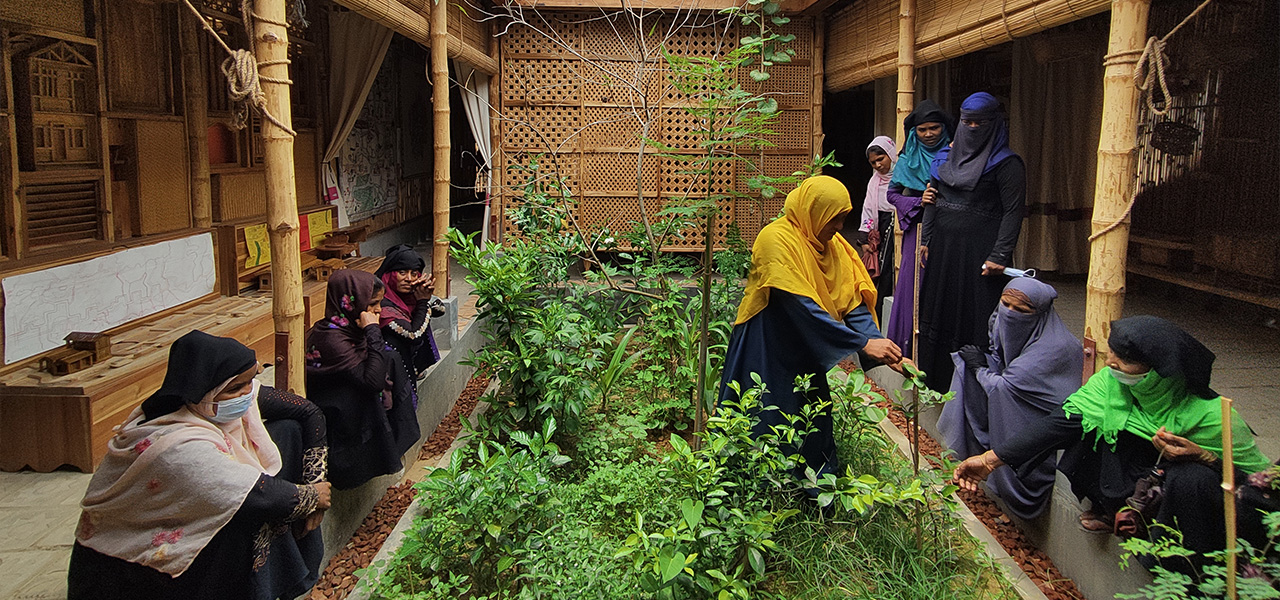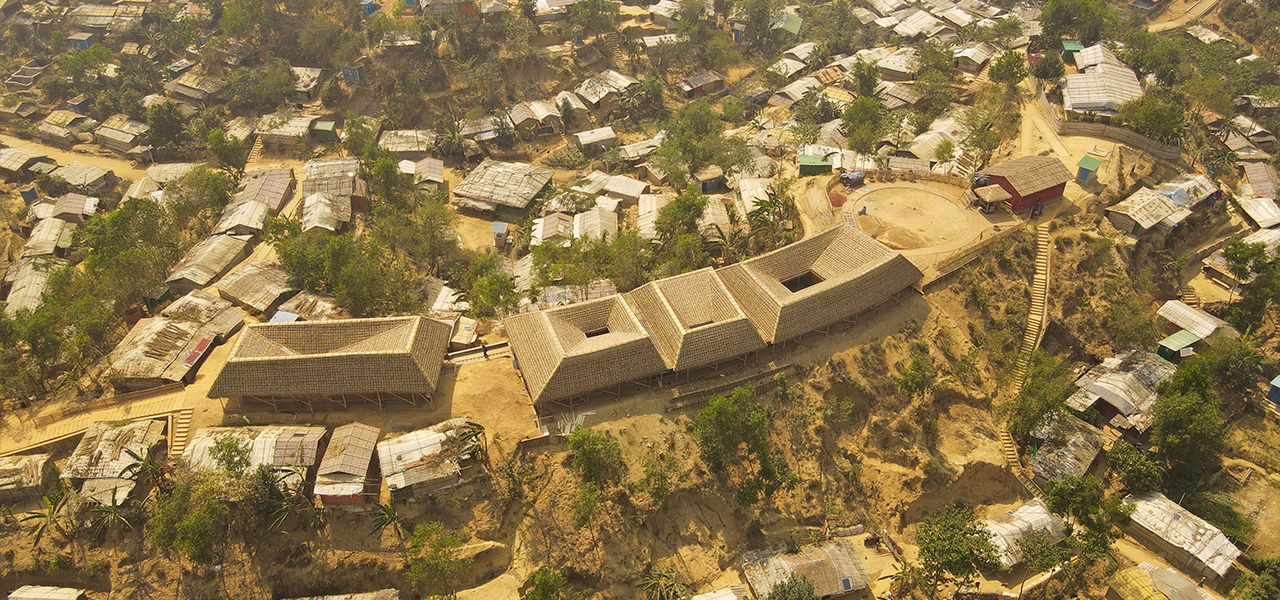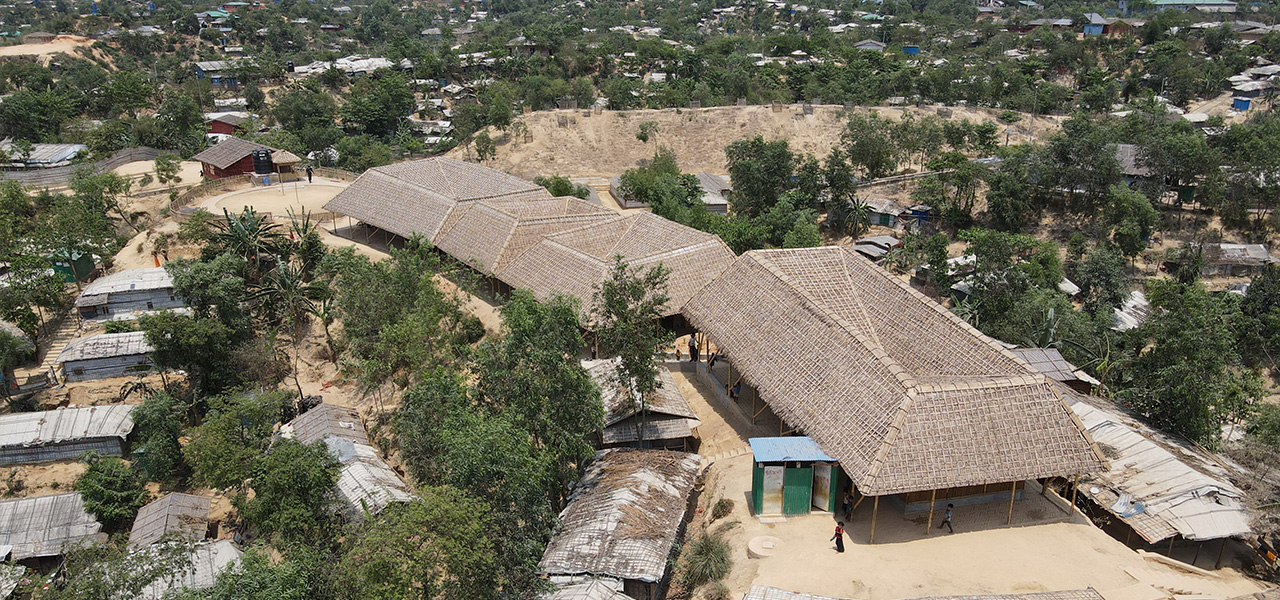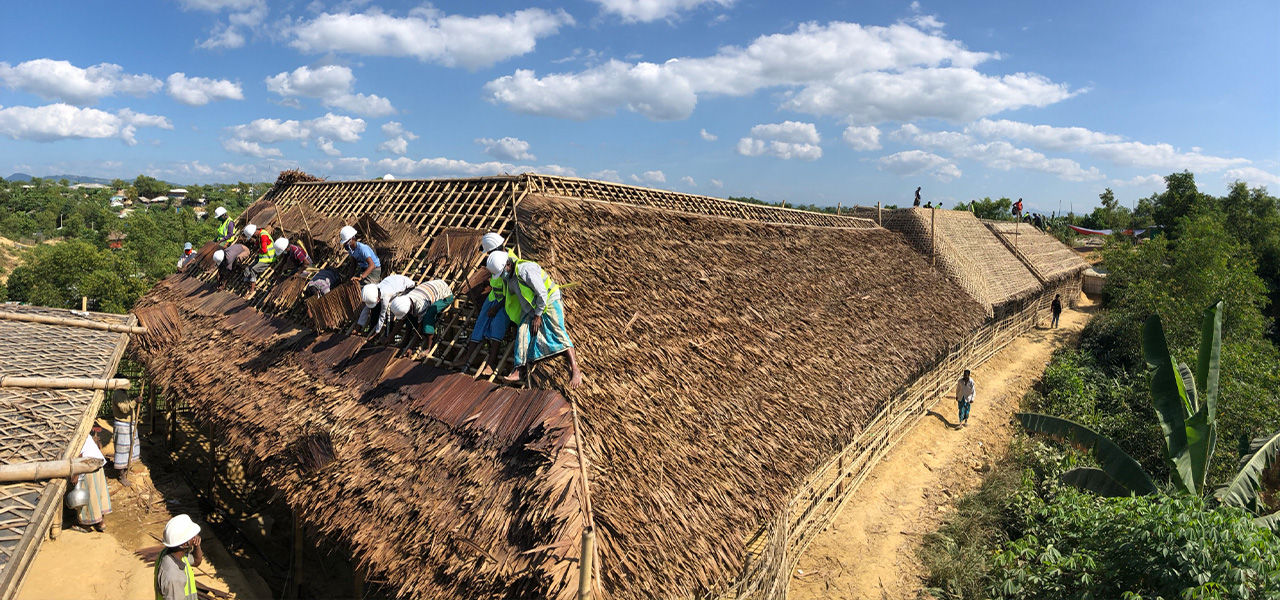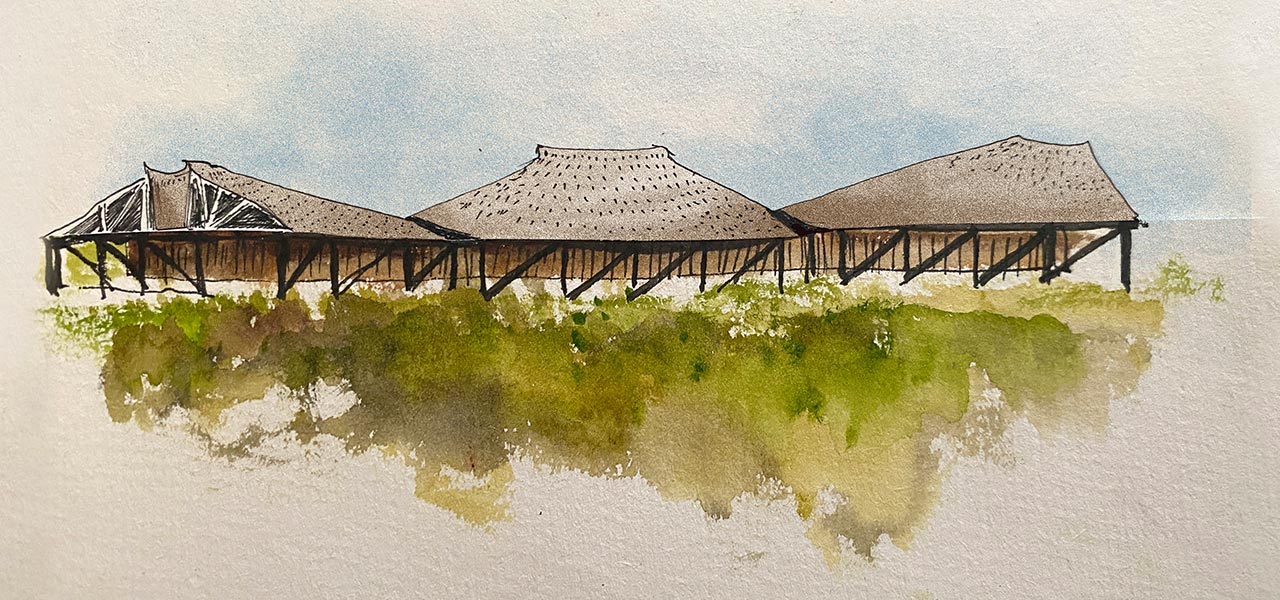A SPACE PRESERVING & EXPRESSING ROHINGYA CULTURE
The Rohingya Cultural Memory Centre (RCMC) provide Rohingya refugees in the Cox’s Bazar camps with a creative and safe space where they can share their knowledge, preserve their cultural heritage and reconnect with their individual and collective memory.
In order to produce the cultural content and spatial design for the centre, the RCMC team started a research journey with the help of a team of Rohingya cultural agents who conducted hundreds of inter-generational community consultations and organized dozens of production workshops with key Rohingya artisans. This set of activities helped identify the key areas of Rohingya cultural practice and to produce a vast collection of tangible and intangible Rohingya cultural artefacts, which is known today as the RCMC collection and is available for view under the
TREASURE/KIMOTI section of this website.
In 2019, a potential site for the centre was identified in the heart of the refugee camps. Its proximity to IOM facilities prompted the idea to expand the architectural concept into an integrated multi-complex cultural hub. To develop the design, IOM engaged two Bangladeshi architects, Rizvi Hassan and Khwaja Fatmi, who have experience working in refugee and host communities. They have both produced excellent architectural projects in the past, with different government departments, UN agencies, and NGOs serving the Rohingya emergency response in Cox’s Bazar.
The finished centre is a hilltop complex integrating several facilities integrating an artisans’ workshop space, office and main exhibition hall displaying the Rohingya experience through a series of walk-through narratives. The exhibitition hall is accessible to community and external visitors.
IOM is currently seeking donors interested in supporting the different elements of this unique project aimed at preserving the Rohingya cultural heritage.
THE ROHINGYA EXPERIENCE
The walk-through exhibition provide visitors with an interactive experience, navigating through different areas of tangible and intangible culture. Defined in close consultation with the refugee community, the exhibition ranges from the inner to the outer circles of Rohingya culture and life; from traditional to more contemporary forms of artistic expression; from Rohingya vernacular architectural models to the geography and landmarks of Arakan. It will include domestic pottery and basketry items; farming artefacts used throughout the rice cultivation cycle; displays of intricate bamboo weaving techniques; rattan and wooden furniture; fishing tools and technique as well as boatmaking; papercrafts and embroidery; visual arts, gastronomy, and other intangible forms of wisdom and storytelling.
The centre background for cultural activities and canvas for Rohingya memories. It is a space where materials, ideas and memories blend. Although not a permanent space, this platform will act as a positive catalyst for Rohingya refugees to learn from each other through knowledge-sharing. Many of the beneficiaries engaged in consultations highlighted their children's need for biddya, or non-formal education or practice-based learning. Through it, life wisdom can positively be transferred from older to younger generations, contributing towards strengthening the collective Rohingya identity.
In 2021, the RCMC team arranged skills sharing sessions as part of the process of constructing the centre. Skilled RCMC artisans trained non-skilled artisans across other camps to create ownership and belonging. As different components of the centre are being assembled by artisans in different camps to then be assembled at the site, the centre is made and owned by everyone.
Moreover, the team has carefully selected contextual plants, trees, shrubs and ground cover for plantation around the centre. The selected greenery benefits soil, enrich the water aquifer, and regenerate lost bio-diversity.
For further information, please email
cxbpsu@iom.int.
Photo credits: Rizvi Hassan, Shaila Siraj/IOM and Ahammod Hossain Masum/IOM.
